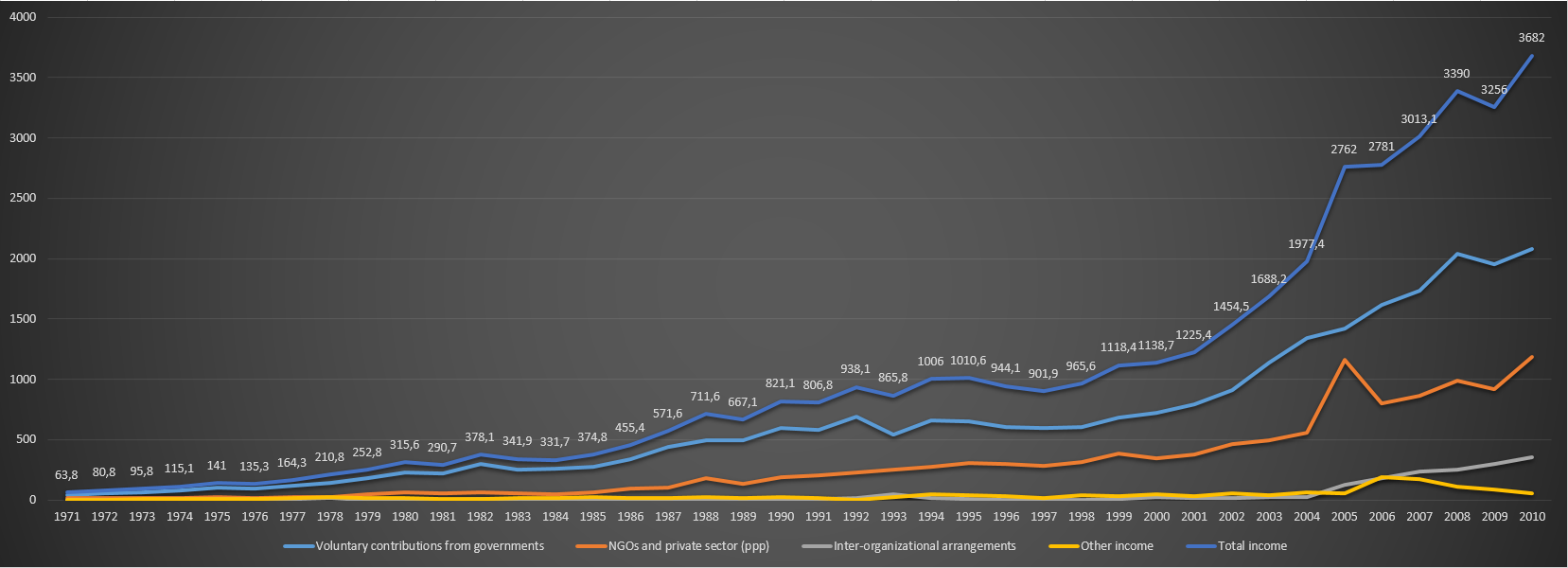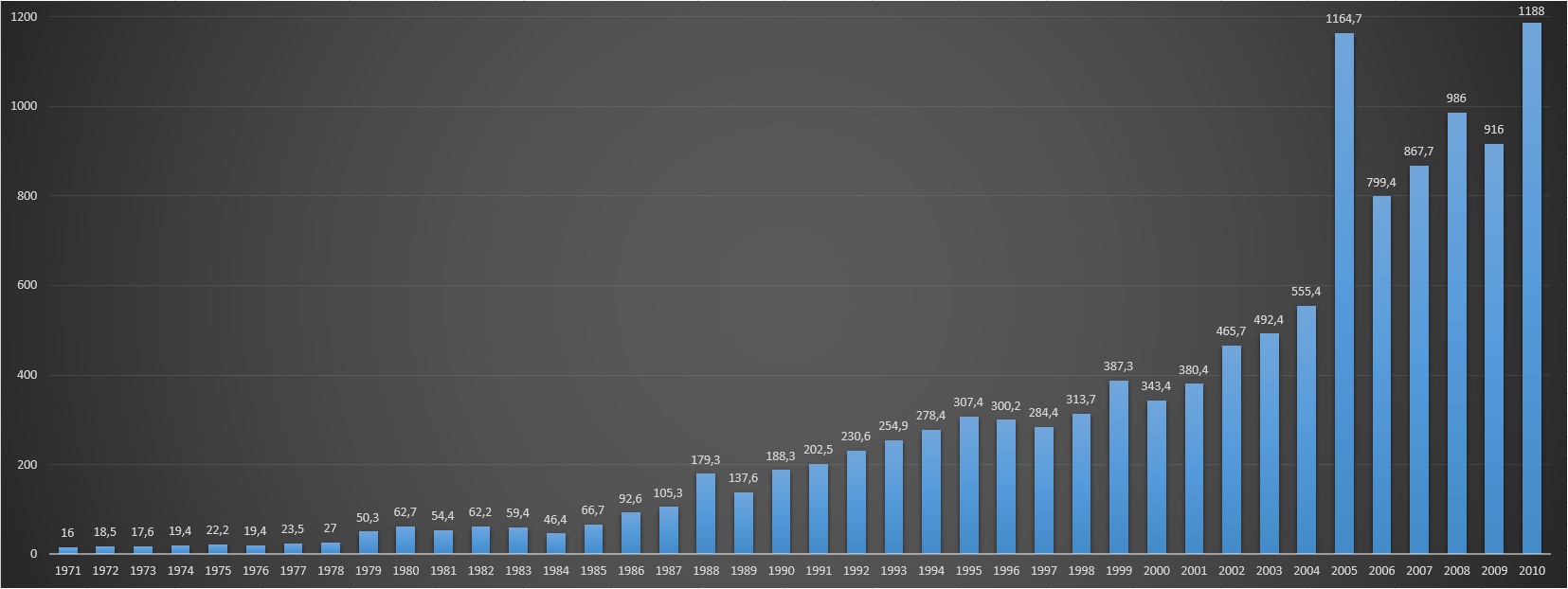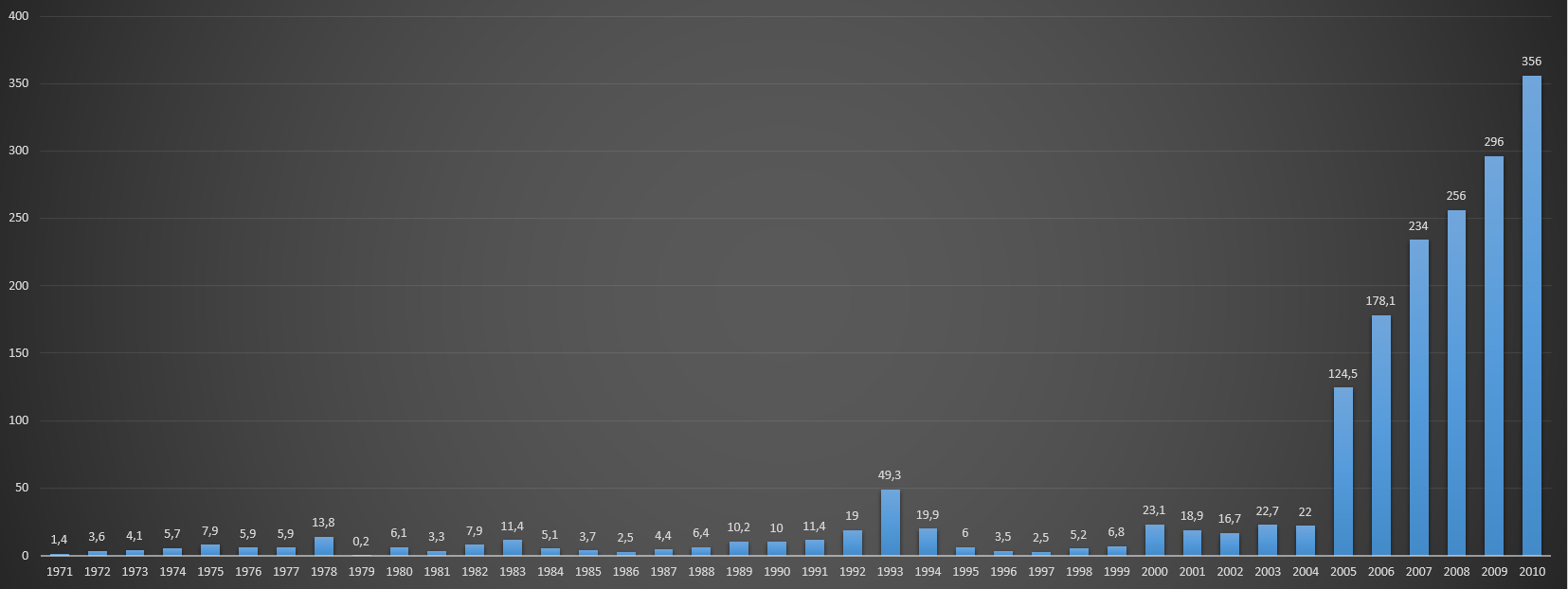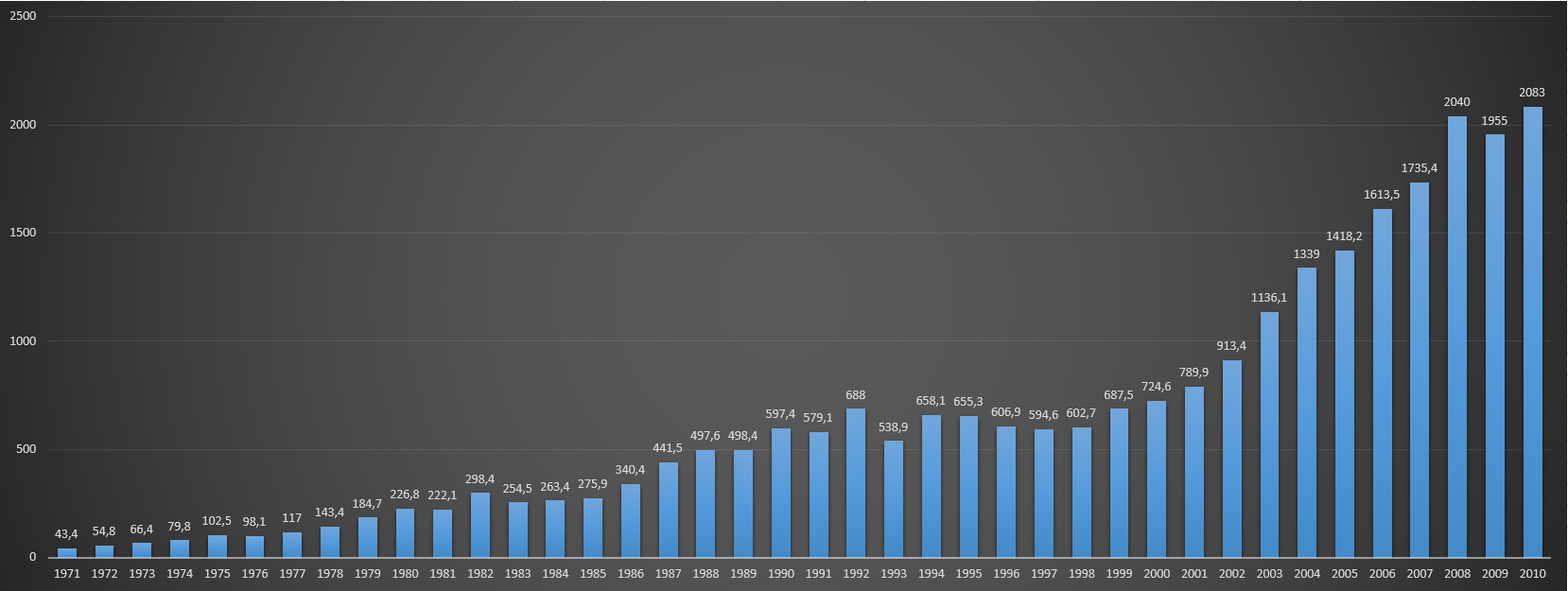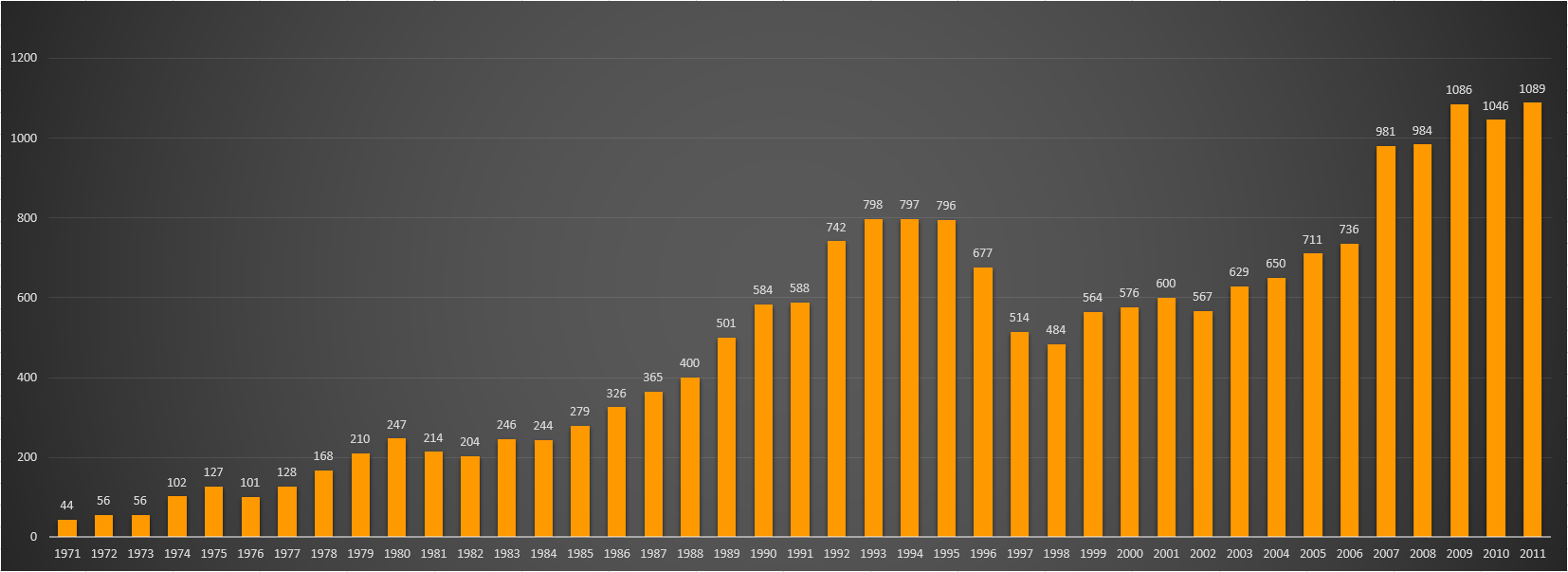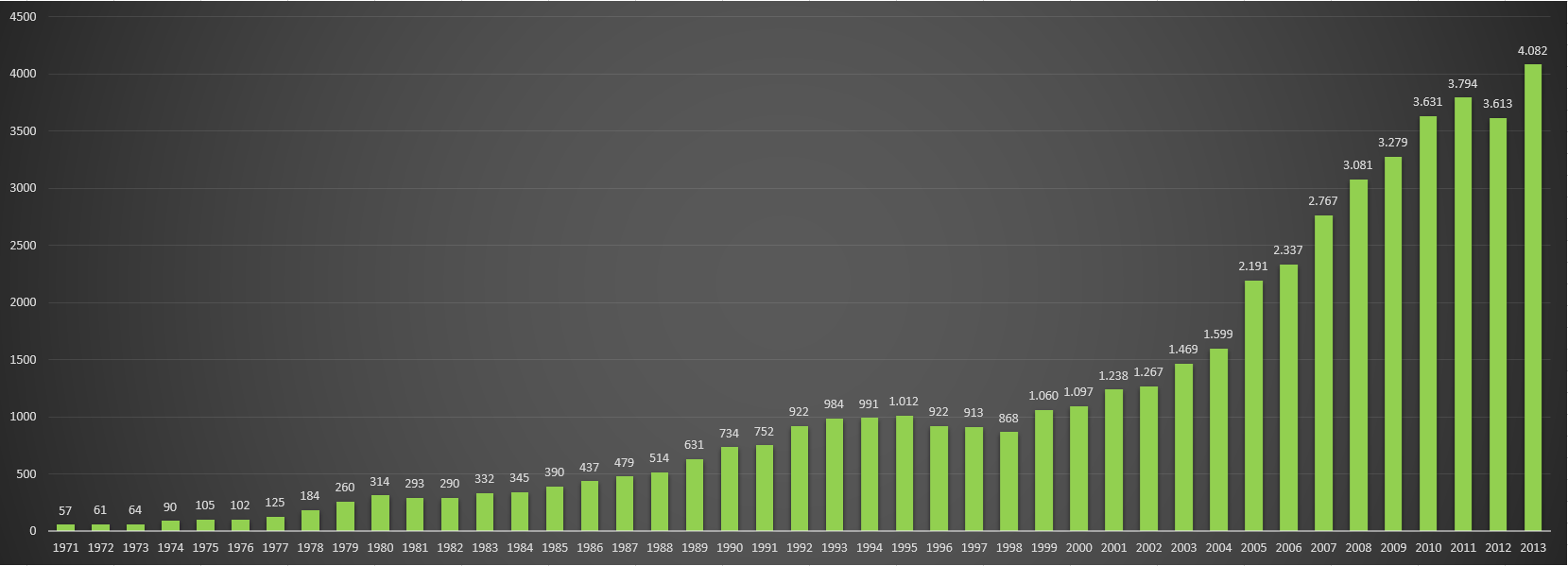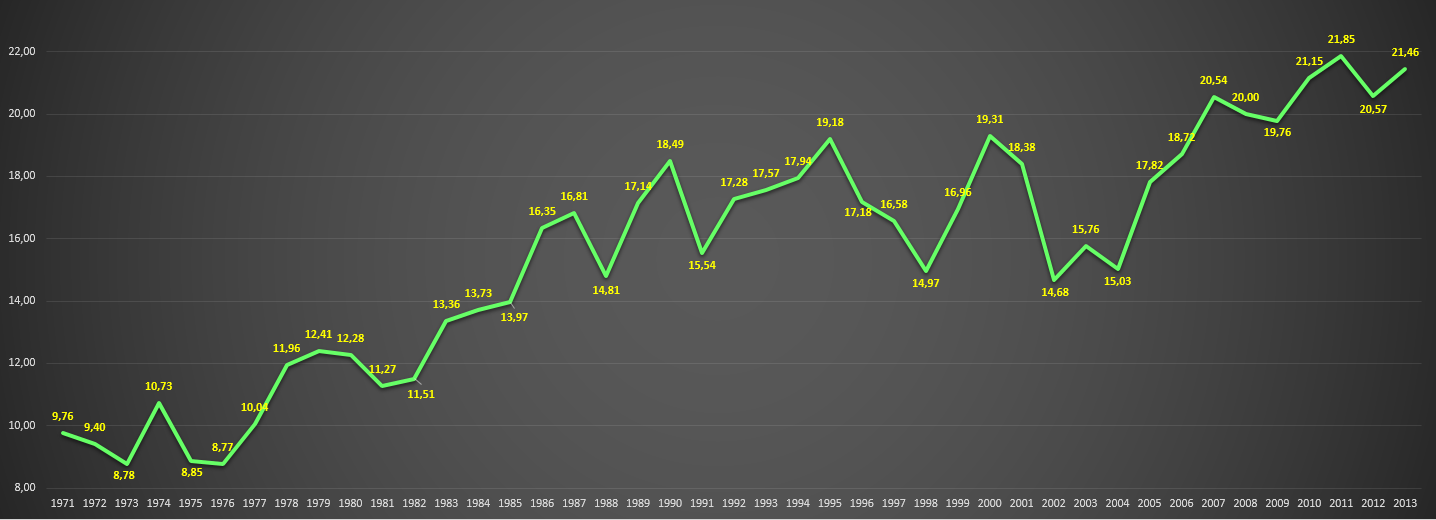| Year/period |
Month and date |
Type of event |
Event |
Location
|
| 1919 |
|
Antecedent |
The concept of children's aid has its origin in World War I. British social reformer Eglantyne Jebb, having documented the effect of that war on children, founds the Save the Children International Union (SCIU).[1] |
|
| 1924 |
|
Background |
Save the Children International Union (SCIU) principles are adopted by the League of Nations as the World Child Welfare Charter.[1] |
Switzerland (Geneva)
|
| 1945 |
September 2 |
Background |
World War II ends and leaves millions without shelter, with farming severely disrupted, and population extremely vulnerable to communicable diseases such as tuberculosis.[1] |
|
| 1945 |
October |
Antecedent |
The United Nations is founded, and begins operating a relief organization called the United Nations Relief and Rehabilitation Administration (UNRRA) to combat famine and disease in liberated Europe.[1] |
|
| 1946 |
|
Organization |
Save the Children International Union merges into the International Union of Child Welfare, and this group presses the United Nations to continue to work for war–scarred children.[1] |
|
| 1946 |
|
Background |
The former Allies of World War II begin to regroup, and as the Cold War begins, Europe falls into distinct Eastern and Western zones. The United Nations Relief and Rehabilitation Administration comes to an end, though its budget has not all been spent, on the tacit understanding that it is not equally welcome in all parts of Europe. However, there is still need for a relief group, especially as the winter of 1946-47 threatens to become one of the worst on record.[1] |
|
| 1946 |
December |
Foundation |
The United Nations creates program United Nations Children's Fund (UNICEF) to provide food, clothing and health care to children in need.[5] |
|
| 1947 |
January |
Administration |
American businesmann Maurice Pate enters office as the first Executive Director of UNICEF. During his administration, Pate would extend UNICEF's mandate to include developing countries. In the late 1950s and early 1960s, Pate would help UNICEF focus on newly independent countries.[6] |
|
| 1947 |
|
|
The first UNICEF National Committee is created. UNICEF's first greeting card is released.[2] |
|
| 1948 |
|
Assistance |
UNICEF assists 500,000 displaced Palestinian children.[2] |
Palestina
|
| 1950 |
|
Policy |
UNICEF's charter is reviewed by the United Nations. Having been successful in helping children in Europe and Japan, and having begun to extend into Latin America and Asia, the United Nations General Assembly votes unanimously to extend UNICEF's charter for another three years.[1] |
|
| 1951 |
|
Administration |
UNICEF begins fundraising on its own with the sale of greeting cards.[1] |
|
| 1952 |
|
Initiative |
UNICEF recruits French painter Raoul Dufy to create a design for a UNICEF card. Dufy is the first world–renowned artist to donate designs to UNICEF. Pablo Picasso, Henri Matisse, Salvador Dali and many other notable artists would contribute artwork to UNICEF to be made into greeting cards.[1] |
|
| 1953 |
|
Policy |
UNICEF becomes permanent part of the United Nations.[5] The same year, the organization launches its first water, sanitation and hygiene programs.[3] |
|
| 1953 |
|
Program launch |
UNICEF begins a global campaign against yaws, a disfiguring tropical disease that affects millions of children.[5] |
|
| 1953 |
|
Assistance (food) |
UNICEF sends 68,000 pounds of milk to Guatemala.[7][2] |
Guatemala
|
| 1954 |
|
Administration |
American actor Danny Kaye becomes UNICEF’s “Ambassador at Large.” His film Assignment Children, about UNICEF’s work in Asia, is seen by more than 100 million people.[5][2] |
|
| 1959 |
|
Policy |
The United Nations General Assembly adopts the Declaration of the Rights of the Child, which defines children’s rights to protection, education, health care, shelter and good nutrition.[5][2] |
|
| 1961 |
|
Policy |
UNICEF starts supporting teacher training and classroom equipment in newly independent countries.[5] |
|
| 1962 |
|
Assistance (medicine) |
UNICEF assists 35 projects (20 of them in Africa) with aims at providing treatment for more than one million lepers, about half of them mothers and children.[8] |
|
| 1965 |
June |
Administration |
American diplomat Henry Richardson Labouisse, Jr. succeeds Maurice Pate as Executive Director of UNICEF. Labouisse would emphasize community-based initiatives for health, nutrition, formal and non-formal education, and water and sanitation. Major conflicts and natural disasters during the late 1960s and 1970s would lead to an increase in UNICEF emergency relief operations.[9] |
|
| 1965 |
|
Administration |
UNICEF designates half its Africa Budget for education.[10] |
Africa
|
| 1965 |
|
Award |
UNICEF is awarded the 1965 Nobel Peace Prize “for the promotion of brotherhood among nations.”[5] |
|
| 1967–1970 |
|
Assistance (food) |
UNICEF brings food to millions of starving mothers and children during the Nigerian civil war. Labouisse met withng hours. UNICEF executive director Henry Richardson Labouisse, Jr. meets with Nigeria's leader, General Yakubu Gowon in 1968, and pleads for UNICEF helicopters to be allowed to land food in Biafra during the evenig without being shot down. Finally UNICEF is able to deliver at least 12 tons of food to children on the Biafran side. UNICEF also develops a special liquid food (called K-Mix-2) for children who are too weak from malnourishment to feed themselves.[1][10] |
Nigeria
|
| 1970 |
|
Assistance (food and medicine) |
East Pakistan secedes from Pakistan, and becomes Bangladesh. Aproximately ten million refugees escape to India during the fighting. UNICEF brings food and medicine to the displaced people living in camps. UNICEF special liquid food K-Mix-2, proves extremely useful in India.[1] |
India
|
| 1973 |
|
Assistance (food, medicine, infraestructure) |
UNICEF executive director Henry Richardson Labouisse, Jr. brings about an agreement with North Vietnam (which refuses UNICEF's aid), and is allowed to bring needed food and medicine, and also work to rebuild schools and hospitals.[1] |
Vietnam
|
| 1975 |
|
Collaboration |
The India Mark II pump is invented, designed in a joint effort between the Government of India, UNICEF, and the World Health Organization to address the severe drought and water shortage affecting India during this period, and to prevent evacuation of villages to refugee camps. [2][10] |
India
|
| 1977 |
|
Coverage |
UNICEF is involved in child health programs in 100 countries.[11] |
|
| 1978 |
|
Policy |
Children’s services are recognized as women’s issues.[10] |
|
| 1978 |
September |
Policy |
The Alma Ata Declaration is adopted and expresses the need for urgent action by all governments, all health and development workers, and the world community to protect and promote the health of all people.[10][12] |
Kazakhstan (Almaty)
|
| 1979 |
January 1 |
|
The International Year of the Child is proclaimed and celebrated around the world, thus reaffirming the commitment to children’s rights.[5] " The International Year of the Child put a focus on children in all parts of the world. The problems of children in war-torn areas were clear, but the International Year of the Child led to new programs for less obvious troubles, such as child prostitution and drug abuse. Hundreds of new organizations came into being that year, as children's problems were explored all across the globe. The prestige of UNICEF was very high at that time. Its income rose 25 percent in 1979, to $285 million from $211 million a year earlier"[1] |
|
| 1979 |
|
Assistance |
UNICEF is allowed to assist in Kampuchea, providing for millions of displaced people in that country."[1] |
Cambodia
|
| 1980 |
January |
Administration |
American statesman James P. Grant succeeds Henry Richardson Labouisse, Jr. as Executive Director of UNICEF. During Grant's administration UNICEF would launch the "child survival and development revolution", mobilizing initiatives to bring life-saving, cost-effective techniques to children in developing countries.[13] |
|
| 1980 |
|
Program launch |
UNICEF launches initiative called "Women in Development Programme".[14] |
|
| 1981 |
|
Policy |
The International Code of Marketing of Breast-milk Substitutes is adopted by the World Health Assembly as a health policy framework in order to encourage breastfeeding, and in so doing diminish the threats to infant health.[5] |
|
| 1982 |
|
Program launch |
UNICEF launches initiative known as Child survival revolution, consisting in focusing on four basic child health measures: health monitoring, breastfeeding, immunization, and hydration. The strategy would be known as GOBI-FFF:G for growth monitoring to detect undernutrition in small children, O for oral rehydration therapy to treat childhood diarrhea, B to encourage breastfeeding (which had declined precipitously due to working mothers and the marketing of infant formula), and I for immunization against the six basic childhood diseases: tuberculosis, polio, diphtheria, tetanus, whooping cough, and measles. (They added two Fs: food supplements and family planning; and, later, a third: female education.)[15][16] Instead of referring to infant and young child mortality as measurements of development, UNICEF suggests a direct attack on infant and child mortality as an instrument of development.[5][1] |
|
| 1982 |
|
Policy |
UNICEF publishes report, The State of the World's Children, advocating a global focus on basic steps to ensure children's health. Leaders from all over the world join to promote the new program. UNICEF executive director James P. Grant focuses on four basic strategies to bolster child survival: Child growth monitoring, so that parents and health workers could detect malnutrition in very young children; breastfeeding, which is markedly better for children than infant formulas; immunization against six common diseases; and oral rehydration, a simple practice that could reverse the often lethal effects of infant diarrhea.[1] |
|
| 1984 |
|
Assistance (food) |
UNICEF assists with food in the Horn of Africa and Sahel regions.[17][14] |
Africa
|
| 1985 |
|
Assistance |
UNICEF cooperates in programs in 118 countries, with a child population under 16 years of age of around 104 billion.[18] |
|
| 1987 |
|
Study |
UNICEF’s study titled Adjustment with a Human Face induces a global debate on how to protect children and women from the malign effects of the economic adjustments and reforms taken to reduce national debt in poor countries.[5] |
|
| 1988 |
|
Initiative |
UNICEF proposes the idea of a 'Global Summit for Children', with aims at codifying, for the first time in history, a set of legal obligations towards children in the form of an international Convention on the Rights of the Child. The World Health Organization and UNICEF agree to proceed with implementing the Bamako Initiative, as a means of revitalizing primary health services in Africa.[19] |
|
| 1989–1990 |
|
Policy |
The Convention on the Rights of the Child is adopted by the United Nations General Assembly. It enters into force in September 1990, and becomes the most widely and rapidly accepted human rights treaty in history.[5][5][20] |
|
| 1989 |
|
Collaboration |
UNICEF joins with the Worlf Food Programme and other 35 non–governmental organizations in a consortium called Operation Lifeline Sudan, in order to provide humanitarian assistance during the Second Sudanese Civil War.[14] |
Sudan
|
| 1989 |
|
Assistance (education) |
UNICEF negotiates with a number of Lebanese armed factions to transport children from different religious and cultural backgrounds to a two-week summer camp. Through sports and other several activities, the children are invited to question their values, beliefs and biases while learning conflict resolution skills. Since then, more than 240 NGOs would undertake education for peace activities, and the Lebanese Government would include peace education in the national curriculum.[14][21] |
Lebanon
|
| 1990 |
|
Program launch |
UNICEF, in partnership with the World Health Organization, relaunches its breastfeeding campaign. UNICEF begins certifying hospitals as "baby-friendly" if they comply with certain guidelines that promote breastfeeding. Some countries, such as Mexico, make fast gains with this new program. Mexico's infant mortality rate would fall by one-third between 1990 and 1994.[1] |
|
| 1991 |
|
Collaboration |
"Days of Tranquillity" are negociated during the Salvadoran Civil War. Aproximately 20,000 health workers get 250,000 children immunized against polio, measles, diphtheria, whooping cough, tetanus and other diseases. Food and essential medicines are delivered to civilian populations threatened by famine or ‘food blockade’. UNICEF, among other organizations, bring support to the initiative facilitated by the International Committee of the Red Cross.[22] |
|
| 1991 |
|
Policy |
Noting that 47% of international staff comes from developing countries, the UNICEF Executive Board requests the Administration to expand recruitment from developing countries for international Professional posts, both at headquarters and at field offices.[23] |
|
| 1992 |
|
Assistance (food) |
UNICEF delivers food in Somalia. However, its contribution is calculated to be smaller than that of smaller private relief agency Save the Children[24][20] |
Somalia
|
| 1992 |
|
Assistance (medicine) |
UNICEF provides immunizations for major childhood diseases in areas affected by the Bosnian War. About 90% of Bosnia's children receive needed immunizations.[25][20] |
Bosnia, Herzegovina
|
| 1992 |
|
Assistance |
UNICEF assists to refugees and displaced persons in Tanzania.[20] |
Tanzania
|
| 1993 |
|
|
UNICEF begins putting out a new annual report called The Progress of Nations, a compendium of statistics relating to child health, that would allow for easy comparisons of countries with similar problems or similar incomes.[1] |
|
| 1994 |
|
Assistance |
UNICEF helps reunite 100,000 Rwandan families after the Rwandan genocide.[20] |
Rwanda, Congo DR
|
| 1994 |
|
Assistance (education) |
UNICEF and UNESCO invent the ‘school-in-a-box’, a portable aluminum container stuffed with hundreds of implements and supplies that enable children and teachers to create an instant classroom. The purpose of the kit is to ensure the continuation of children's education by the first 72 hours of an emergency.[26][20] |
|
| 1995 |
|
Report |
UNICEF annual report The State of the World's Children finds that for 90 percent of the world's children, rates of disease and malnutrition are falling.[1] |
|
| 1995 |
January |
Administration |
UNICEF executive director James P. Grant dies, and is succeeded by Carol Bellamy. Bellamy would focus on five major priorities: immunizing every child; getting all girls and boys into school, and getting all schools to offer quality basic education; reducing the spread of HIV/AIDS and its impact on young people; fighting for the protection of children from violence and exploitation; and introducing early childhood programmes in every country. Bellamy would double UNICEF's resources from roughly US$800 million in 1994 to more than US$1.8 billion in 2004.[27][1] |
|
| 1996 |
|
Policy |
UNICEF programs start to be guided by the Convention on the Rights of the Child, which affirms the right of all children to “the enjoyment of the highest attainable standard of health and to facilities for the treatment of illness and rehabilitation of health.”[28]
|
|
| 1998 |
|
Assistance |
UNICEF assists to child-headed households in Rwanda. A least 300,000 children are estimated to live in 85,000 child-headed households, 70 percent of which are headed by girls.[29][20] |
|
| 1998 |
|
Collaboration |
UNICEF becomes a founding member of the Roll Back Malaria Partnership to support malaria treatment and research, and expands prevention measures such as long-lasting insecticide-treated bed nets.[3] |
|
| 1999 |
|
Program launch |
UNICEF and the equipment supplier launch a five-year program twith aims at supporting the elimination of neonatal tetanus worldwide. The equipment supplier commits a US$ 1 million cash grant and US$ 3 million worth of products and equipment to a potential vaccine supplier.[23] |
|
| 2000 |
|
|
UNICEF predicts complete childhood polio erradication by 2005.[1] |
|
| 2001 |
January |
Administration |
Ann Margaret Veneman succeeds Carol Bellamy as Executive Director of UNICEF. Under her management, UNICEF would launch initiatives to improve business practices, transparency and collaboration to ensure that the agency's programs reach those most vulnerable.[30] |
|
| 2001 |
|
Program launch |
Say Yes for Children campaign is launched. The Global Movement for Children begins campaign if citizen mobilization. The Say Yes for Children campaign builds on this momentum, with millions of people around the world pledging their support for critical actions to improve children’s lives."[5] |
|
| 2002—2003 |
|
Administration |
UNICEF spents over US$ 160 million for consultants, an increase of 24% over the previous biennium.[23] |
|
| 2002—2003 |
|
Supply |
UNICEF receives 3.2 million free doses of anti-tetanus vaccine from a supplier, on account of a 1999 agreement between the Program for Appropriate Technology in Health (PATH), an equipment supplier and a vaccine supplier.[23] |
|
| 2002 |
|
Policy |
The Special Session on Children, a landmark Special Session of the United Nations General Assembly is convened to review progress since the World Summit for Children in 1990 and re-energize global commitment to children's rights. It would be the first such Session devoted exclusively to children and the first to include them as official delegates.[5] |
|
| 2002 |
|
Organization |
The Global Fund to Fight AIDS, Tuberculosis and Malaria is founded. From its inception, UNICEF would be an active partner, contributing to a stronger child focus in the Global Fund’s policies, investments and reporting.[31] |
|
| 2003 |
|
Administration |
UNICEF has 1,657 international Professional staff members, of which 45% are women.[23] |
|
| 2005 |
|
Cooperation |
UNICEF first develops principles guiding its engagement with The Global Fund to Fight AIDS, Tuberculosis and Malaria.[31] |
|
| 2005 |
|
Crisis |
Indian Ocean tsunami strikes. Record-breaking humanitarian response arrives. UNICEF assists victims.[32] |
|
| 2005 |
November 5 |
|
UNICEF and the United Nations Programme on HIV/AIDS (UNAIDS) sign a partnership with the West Indies Cricket Board (WICB), as an initiative to fight against HIV/AIDS. The alliance sets out a shared commitment to respective relationships at a regional level within the Caribbean.[33] |
|
| 2009 |
|
Collaboration |
UNICEF undertakes a review of its engagement with the Global Fund, resulting in the reestablishment of the collaboration in the following areas: procurement and supply management, re-programming and scale up for the prevention of mother-to-child transmission (PMTCT) of HIV, support for and scale up of malaria interventions, becoming a principal recipient and other grant management roles, technical support to countries, joint reporting and global advocacy.[31] |
|
| 2009 |
September |
|
The Prevention of Mother to Child Transmission (PMTCT) Initiative is announced jointly by UNAIDS, UNICEF and the Global Fund, with the goal of eliminating mother-to child transmission (eMTCT) by 2015.[31] |
|
| 2010 |
April |
Administration |
American diplomat Anthony Lake succeeds Ann Margaret Veneman as Executive Director of UNICEF. Under her management, UNICEF would launch initiatives to improve business practices, transparency and collaboration to ensure that the agency's programs reach those most vulnerable.[34] |
|
| 2013 |
March |
Publication |
UNICEF released a briefing paper titled “Children in Israeli military detention: observations and recommendations” highlighting the abuse of children in the Israeli military detention system, and including 38 specific recommendations to address “widespread, systematic and institutionalized” ill-treatment of Palestinian children in the system. Following its release, UNICEF engages in a dialogue with Israeli authorities on children’s rights in order to improve the protection of children in line with international law.[35] |
|
| 2014 |
February |
Cooperation |
Norwegian multinational Telenor and UNICEF sign a global partnership agreement, with aims at leveraging the reach and capability of connectivity for children’s survival and development.[36] |
|
| 2015 |
|
Assistance |
UNICEF distributes 22.3 million bed nets to protect children and families in 30 countries against malaria.[3]
|
| 2015 |
|
Product launch |
UNICEF Kid Power is launched as an initiative from the US Fund for UNICEF, consisting in the development of bands act as a kids’ fitness tracker bracelets that connect to a smartphone app. The app lets users complete missions, which counts total steps and awards points. The points then unlock funding from partners, which is then used by UNICEF to deliver lifesaving packets.[37] |
|
